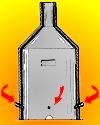
On 23 Jun 1857, a U.S. patent was issued to William Kelly. He had been experimenting with the steel-making process for a few years, but he had not patented it until he heard that the Englishman, Henry Bessemer, had been granted a U.S. patent on a like process. Kelly had not filed first, but he was able to convince the patent office that he was the first to invent the air-blast method of forming steel from iron in a cupula. Kelly thus held rights of priority for his patent. However, Bessemer had important additional steps worked out to mass-produce steel. Bessemer was a businessman and industrialist who made the Bessemer process profitable, but Kelly still benefitted from his share, though smaller, of the vast profits.
A Scientific American article was published in Oct 1857, giving its commentary on 'An English Opinion of the United States Patent Office Management'. It makes interesting reading to see the 19th century patent dispute, as viewed from opposite sides of the Atlantic.
To know more about the innovation to which William Kelly made claim, you can read his U.S. patent No. 17,628 (23 Jun 1857), 'Improvement in the Manufacture of Iron', which is quite short, and easy to understand.

On 23 Jun 1942, English cosmologist and astrophysicist, Martis Rees was born. He became Astronomer Royal in 1995. He has written numerous magazine and newspaper articles on scientific subjects, most for general readership—as well as a number of books. Today's book pick is: Our Final Hour: A Scientist's Warning, by Martin Rees, which highlights concerns of terror, error, and environmental disaster threats to humankind’s future. His elegantly presented arguments are provocative, but rooted firmly in science. For example, nano-machines stand poised to revolutionize technology and medicine, but what happens if these minuscule beasties break their leash and run amok? There are too many speculative TV shows to count, which are shallow and sensationalistic. But in this book you will find food for thought, soberly written. You can be your own judge of how much fear or curiosity you take away from reading this book. A review in the journal Nature called it “Provocative and educational … A twenty-first-century analogue of Rachel Carson’s Silent Spring.”
It is available from Amazon, typically about New from $5.24. Used from $2.00. (As of earlier time of writing - subject to change.)
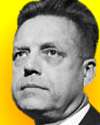 | There is a tendency to consider anything in human behavior that is unusual, not well known, or not well understood, as neurotic, psychopathic, immature, perverse, or the expression of some other sort of psychologic disturbance. |
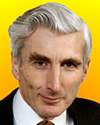 | If we ever establish contact with intelligent aliens living on a planet around a distant star … They would be made of similar atoms to us. They could trace their origins back to the big bang 13.7 billion years ago, and they would share with us the universe's future. However, the surest common culture would be mathematics. |
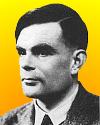 | Science is a Differential Equation. Religion is a Boundary Condition. |
| Before you look at today's web page, see if you can answer some of these questions about the events that happened on this day. Some of the names are very familiar. Others will likely stump you. Tickle your curiosity with these questions, then check your answers on today's web page. | |
| Births | |
 | On 23 Jun 1937, English geologist and paleoclimatologist, Nicholas Shackleton was born. He helped identify carbon dioxide as a greenhouse gas. Shackleton studied the ancient climate changes of the Quaternary period (the last 1.8 million years), during which there were periods building up massive ice sheets and mountain ice caps alternating with warm weather when the ice receded. He specified from his data, a number of years by which Ice Ages recurred. What number of years (to the nearest 10,000) did Shackleton say his data roughly showed between Ice Ages? |
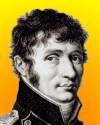 | Étienne-Louis Malus, born 23 Jun 1775, was a French physicist who discovered that light, when reflected, becomes partially … (?) … Can you complete the sentence? |
| Deaths | |
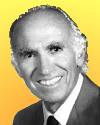 | A U.S. physician and medical researcher (1914-1995) was the creator of the first safe and effective vaccine against poliomyelitis (infantile paralysis). Can you name this scientist? |
| Events | |
 | On 23 Jun 1982, a record low temperature was recorded at the South Pole. To the nearest ten degrees, what was this record low temperature? |
 | On 23 Jun of a certain year, Arthur Melin obtained a patent for the hula-hoop. An Australian visiting California told Melin that in his country, children twirled bamboo hoops around their waists in gym class. Melin, who started toy giant Wham-O in 1948, used savvy marketing to create the hula-hoop craze. Another of his successful simple toys was the Frisbee. In which decade did Melin obtain his hula-hoop patent? |
Fast answers for the previous newsletter for June 22: the development of more than one individual from a single fertilized egg cell • Hermann Minkowski • Felix Klein • he found handwriting the tickets irksome and delaying • Galileo Galilei • the decade including the year 1978.
 If you enjoy this newsletter, the website, or wish to offer encouragement or ideas, please send feedback by using your mail reader Reply button.
If you enjoy this newsletter, the website, or wish to offer encouragement or ideas, please send feedback by using your mail reader Reply button. Your click on a Facebook, StumbleUpon, or other social button on the site webpages is also a welcome sign of appreciation. Thank you for using them.
© This newsletter is copyright 2020 by todayinsci.com. Please respect the Webmaster's wishes and do not put copies online of the Newsletter — or any Today in Science History webpage. (If you already have done so, please remove them. Thank you.) Offline use in education is encouraged such as a printout on a bulletin board, or projected for classroom viewing. Online, descriptive links to our pages are welcomed, as these will provide a reader with the most recent revisions, additions and/or corrections of a webpage. For any other copyright questions, please contact the Webmaster by using your mail reader Reply button.
--
If you do not want to receive any more newsletters, Unsubscribe
To update your preferences and to unsubscribe visit this link
Executive Real Estate Business Class
-
"It was like a man with wings. It wasn't like anything you'd see on TV or in a monster movie." ...
About the publisher
Search This Blog
Blog Archive
-
▼
2020
(1542)
-
▼
June
(193)
- TRAVEL: Epic America—Our photographers' picks
- On This Day for June 30 - Night of the Long Knives...
- Newsletter for Tuesday 30 June.
- We told you: Mass-Tracking COVI-PASS Immunity Pass...
- June 30: Theory of Evolution, the Night of Long Kn...
- HISTORY: And the symbols come tumbling down
- Explore the Ocean with Nat Geo Kids Magazine
- New This Week on History News Network
- On This Day for June 29 - London's Globe Theatre d...
- Newsletter for Monday 29 June.
- COVID Cartoon Night (not funny) while we weep for ...
- June 29: Shakespeare's Globe Theatre Burns Down an...
- FAMILY: Getting your kid to help others
- Henry VIII's surprising burial place | The world's...
- On This Day for June 28 - Assassination of Archduk...
- Say the wrong thing: lose visitation with your kid...
- Newsletter for Sunday 28 June.
- June 28: Franz Ferdinand Assassinated, the Treaty ...
- The Compass: Kenya
- How the Invention of A/C Changed US Politics
- On This Day for June 27 - Yen made official moneta...
- Newsletter for Saturday 27 June.
- June 27: 1st Women's Magazine, Nuclear Power Stati...
- CORONAVIRUS SPECIAL EDITION: The virus hasn't won ...
- PHOTOGRAPHY: A legendary photographer's enduring r...
- Partner: How to keep your kids learning vocab this...
- Archaeologists Say They've Just Solved The 400-Yea...
- The Roundup Top Ten From History News Network
- On This Day for June 26 - Opening of CN Tower, Bab...
- Newsletter for Friday 26 June.
- Contact Tracer warns of forced vaccinations plus R...
- June 26: Reconnaissance balloons, Kennedy's Clario...
- YOUR WEEKLY ESCAPE: A dangerous quest for hallucin...
- That Was No Bunny: Watch New Episode of Alone Tonight
- ANIMALS: Leave that elephant alone
- On This Day for June 25 - Korean War begun, Antoni...
- Newsletter for Thursday 25 June.
- June 25: 1st Female PhD, Custer's Last Stand, the ...
- SCIENCE: The heat wave in the Arctic
- Demystified: What Does "SPF" Mean?
- On This Day for June 24 - Russia invaded by Napole...
- Breaking News from History News Network
- Newsletter for Wednesday 24 June.
- June 24: Fatal Medieval Dance Manias, the Gadsden ...
- TRAVEL: Fear of flying and hotel rooms fuels RV boom
- Be at the Front Lines of History's Most Epic Battl...
- On This Day for June 23 - Battle of Bannockburn, C...
- Lowest US coronavirus deaths reported since March ...
- Newsletter for Tuesday 23 June.
- June 23: World's Oldest Parliament, the Contracept...
- Life Under The Shah: What Iran Looked Like Before ...
- HISTORY: A swift goodbye to some racist imagery (a...
- A whole year of Britannica Premium for $49.99?
- New This Week on History News Network
- On This Day for June 22 - Mutiny against Henry Hud...
- Newsletter for Monday 22 June.
- Clintons and Gates Connected at the Hip plus Cardi...
- June 22: Galileo Galilei Recants, Last Shot of the...
- FAMILY: How to keep kids safe as places reopen
- On This Day for June 21 - Japanese defenses destro...
- Newsletter for Sunday 21 June.
- June 21: 1st Governor General of India, Fermat's L...
- The Compass: Ecuador
- On This Day for June 20 - Casket Letters found, Ho...
- Newsletter for Saturday 20 June.
- CORONAVIRUS SPECIAL EDITION: Could public bathroom...
- Mandatory Vaccines coming: Bill Gates Accuses Tho...
- June 20: Attila the Hun, the University of Oxford ...
- PHOTOGRAPHY: Fatherhood 2020 — ‘Fear and courage a...
- Why is America haunted by its past?
- The Woman Who Claimed Emmett Till Wolf-Whistled At...
- This Week's Roundup Top Ten from History News Network
- Exclusive HistoryExtra podcasts | Listen now
- On This Day for June 19 - Rosenbergs executed for ...
- Newsletter for Friday 19 June.
- World Economic Forum starts The Great Reset initia...
- YOUR WEEKLY ESCAPE: How the ultimate shark photo w...
- June 19: London's Metropolitan Police and the 1st ...
- Predator Encounters. Watch New Episode of Alone To...
- ANIMALS: Finding the snow leopards
- Count on a Source You Can Trust
- On This Day for June 18 - War of 1812 begun, Sir P...
- Newsletter for Thursday 18 June.
- Lockdowns, tracing, testing, vaccinating, and Libe...
- June 18: US-British War of 1812, the Battle of Wat...
- SCIENCE: They grew fearsome. They began soft, and ...
- Demystified: How Are Sports Chosen for the Olympics?
- Breaking News from History News Network
- On This Day for June 17 - Arrest of O.J. Simpson, ...
- Newsletter for Wednesday 17 June.
- June 17: Mumtaz Mahal, the French Revolution and G...
- TRAVEL: They hurtled the world's highest point
- Explore together with Nat Geo Kids magazine
- On This Day for June 16 - First woman in space, Jo...
- Newsletter for Tuesday 16 June.
- June 16: Salvation Army Forms, Bloomsday and FDR's...
- HISTORY: Why we can’t shake COVID-19
- New This Week on History News Network
- On This Day for June 15 - Magna Carta sealed by Ki...
- Yes, they really are forcing changes to your world...
-
▼
June
(193)
-
Blogroll
-
About
HistoryFact










0 comments:
Post a Comment